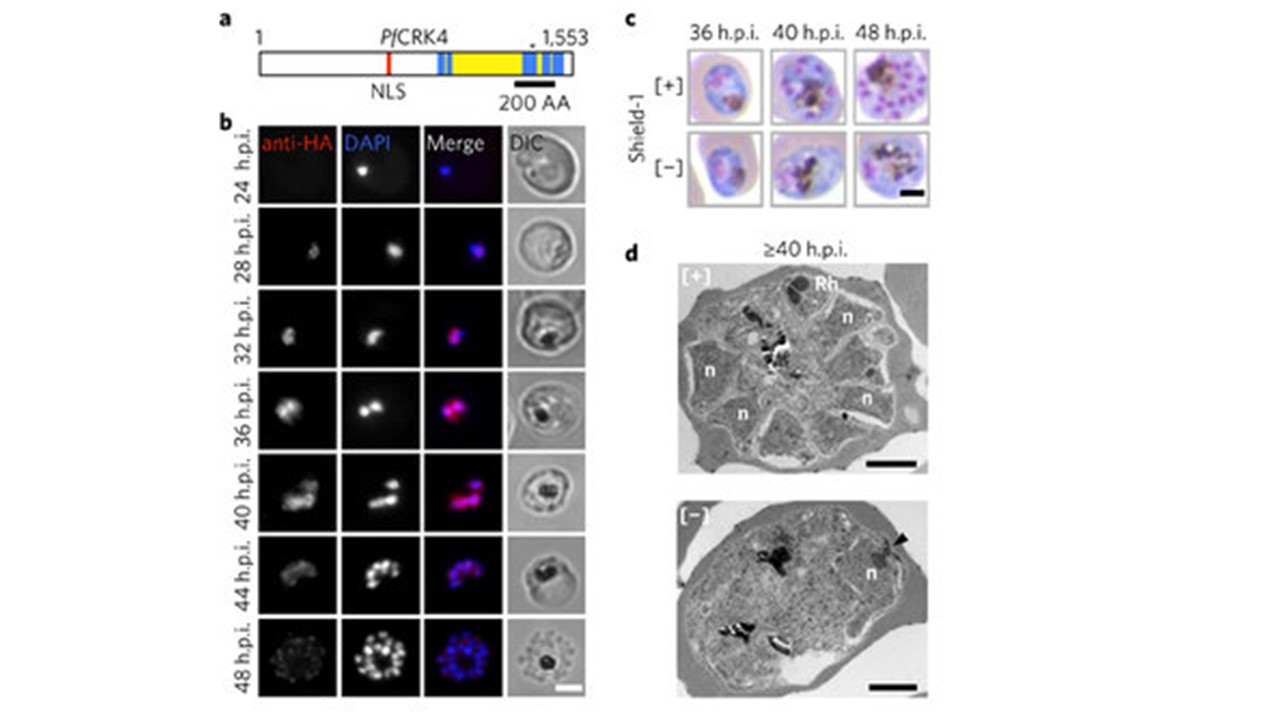Nuclear-localized PfCRK4 is essential for the trophozoite-to-schizont transition and DNA replication. a, Domain structure of PfCRK4. Blue, kinase domain; yellow, kinase domain insertions relative to human CDK2; red, predicted nuclear localization signal (NLS); asterisk, active site residues; 1 and 1,553, first and last amino acid (AA), respectively. b, Immunofluorescence detection of PfCRK4-HA-DD in blood-stage parasites (representative of three biological replicates). Scale bar, 3 μm. c, Light microscopy of May–Grünwald–Giemsa-stained PfCRK4-depleted parasites (D10 parent, representative of two biological replicates and results with P2G12-PfCRK4-HA-DD). DIC, differential interference contrast. Scale bar, 2 μm. d, Ultrastructure of PfCRK4-depleted par sites. PfCRK4 is localized to the nucleus of late trophozoites and schizonts, with the signal greatly diminished in segmented schizonts that have undergone cytokinesis (b). Following conditional depletion of PfCRK4 (d), parasites arrested at the trophozoite-to-schizont transition (c). At ≥40 h post invasion (h.p.i.), parasites [+] Shield-1 (that is, wild-type PfCRK4 levels) segmented into daughter cells containing nuclei and rhoptries (apical organelles required for merozoite invasion), which are characteristic of mature schizonts (d, top). In contrast, parasites cultured [–] Shield-1 (that is, PfCRK4 is depleted) showed no nuclear division or apical organelle biogenesis (d bottom).
Ganter M, Goldberg JM, Dvorin JD, Paulo JA, King JG, Tripathi AK, Paul AS, Yang J, Coppens I, Jiang RH, Elsworth B, Baker DA, Dinglasan RR, Gygi SP, Duraisingh MT. Plasmodium falciparum CRK4 directs continuous rounds of DNA replication during schizogony. Nat Microbiol. 2017 2:17017 PMID: 28211852
